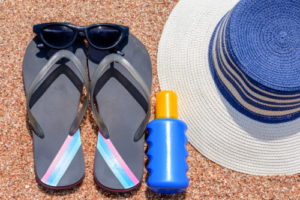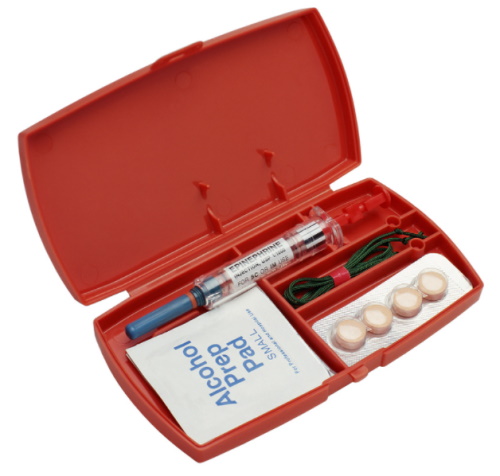Introduction
Choking is a leading root cause of injury and fatality among young children, making it an essential worry for child care companies. Comprehending choking avoidance techniques can save lives. In this short article, we will check out crucial techniques that every child care company need to know, consisting of the significance of emergency treatment training like HLTAID012 qualification in Australia, efficient case reporting procedures, and practical methods for managing minor wounds. We will additionally cover aspects of kid defibrillation advice, identifying bronchial asthma signs, and guaranteeing appropriate hand hygiene-- all important elements of child care safety.

Choking Avoidance: Secret Approaches Every Child Care Provider Ought To Know
Choking is an emergency situation that requires instant attention. Recognizing exactly how to act promptly can be the difference in between life and death. Child care suppliers are frequently on the frontline when it involves children's safety and security, so understanding choking avoidance approaches is imperative.
Understanding Choking Dangers in Children
What are Common Choking Hazards?
Children are naturally interested and tend to discover their atmosphere by placing points in their mouths. Usual choking risks include:
- Food Items: Grapes, nuts, popcorn, hot dogs, and tough candies. Small Objects: Coins, buttons, little playthings, or any type of item that can fit with a toilet tissue roll. Household Items: Balloons and plastic bags.
Why are Children Prone to Choking?
Young youngsters have actually smaller sized airways compared to adults. Their natural inclination to discover with their mouths raises the threat of inhaling foreign objects or food. Age-specific actions-- such as running while consuming-- additionally add to this danger.
Key Techniques for Choking Prevention
Educating Personnel on First Aid Training
Training team in emergency treatment is essential for each childcare company. Training courses such as HLTAID012 Offer Emergency treatment in Education not just cover choking however likewise other emergency situations like allergies calling for Epipen administration
The Significance of Routine Training
To maintain high criteria in child care safety:
- Schedule routine training sessions. Update understanding on brand-new guidelines. Encourage hands-on technique with simulations.
Proper Hand Health Practices
Why is Hand Health Important?
Proper hand hygiene reduces the danger of infections that might make complex emergencies like choking events.
Best Practices for Hand Hygiene
Wash hands with soap and water before dishes and after making use of the restroom. Use alcohol-based hand sanitizers when soap isn't available.Incident Reporting Protocols
What Needs to Be Included in a Case Report?
Every case entailing choking need to be documented diligently:
- Date and time of the incident Description of what happened Actions taken Follow-up measures
Why Case Reports Matter
Incident reports aid determine patterns or reoccuring issues within a childcare setting and promote responsibility amongst personnel members.
Immediate Response Responsibilities
What Should You Do If a Child is Choking?
first aid for childcare Assess the youngster's capability to breathe. Administer back strikes if they can not cough or cry. Call emergency solutions if necessary.Knowing these steps can encourage teachers during crises.
Child Defibrillation Guidance
When Is Defibrillation Necessary?
In situations where a youngster comes to be less competent because of choking-related heart attack:
Call for assistance immediately. Begin mouth-to-mouth resuscitation without delay. Use an AED (Automated External Defibrillator) if available.
Recognizing Asthma Symptoms
How Can Bronchial asthma Complicate Choking?
Children with bronchial asthma might show symptoms like hissing or coughing that can simulate choking episodes.
Importance of Identifying Symptoms
Being able to distinguish between bronchial asthma strikes and choking helps caretakers give proper therapy promptly.

Managing Minor Wounds After an Incident
Steps for Handling Wounds
Even minor injuries need to be treated immediately to stop infection:
Clean the injury gently with soap and water. Apply disinfectant ointment. Cover with a sterile bandage.Building Instructor Self-confidence in Emergency Situation Situations
How Can Training Boost Confidence?
Regular training sessions increase familiarity with treatments:
- Conduct simulated drills replicating emergency situations. Discuss past cases freely amongst team for collective learning.
Childproofing Methods in Child care Settings
What Are Effective Childproofing Methods?
A well-childproofed environment decreases risks:
Use safety and security gates at stairways. Secure hefty furniture to walls. Store hazardous materials out of reach.Written vs Practical Elements of Emergency Treatment Training
What's Even more Effective: Composed Tests or Hands-On Practice?
While both components are necessary, functional abilities are crucial when seconds count throughout emergency situations such as choking incidents.
Balancing Written Tests with Hands-On Learning
Check out this siteEnsure that your program consists of both academic understanding analyses and functional skill evaluations.
Renewal Timelines for First Aid Certifications
When Should Certifications Be Renewed?
Most qualifications need revival every three years; however, check certain policies based on your place-- specifically pertaining to Australian standards such as HLTAID012 certification Australia.
Childcare Centre First Aid Kit Essentials
What Must Be Included in Every Kit?
A detailed first aid set customized for a child care centre should contain:
|Product|Quantity|| -----------------------------------|----------|| Adhesive bandages|20|| Clean and sterile gauze pads|10|| Antiseptic wipes|10|| Disposable gloves|5|| Immediate ice bags|2|| Children's medication (if enabled)|As needed|
Staying stocked guarantees preparedness during emergencies!
First Help for Childhood years High Temperature Australia
How Needs to High temperature Be Managed in Children?
Monitoring fever involves keeping track of temperature frequently while supplying fluids and comfortable clothes as needed. Seek advice from health care experts if fever persists beyond 48 hours or gets to worrying temperatures (over 38 ° C).
Childcare Safety and security Hazards Australia
Identifying Usual Hazards
Common risks include unsecured furniture, sharp objects within reach, unsafe floors, etc, which need to be actively managed through regular evaluations and upkeep schedules.
Childcare Personnel Emergency treatment Requirements Australia
What Are Lawful Obligations?
Each state has specific demands pertaining to personnel credentials connected to first aid training within childcare setups; acquaint yourself with neighborhood laws to remain compliant!
First Help Basics for Parents Australia
Parents ought to additionally be informed concerning standard emergency treatment strategies such as mouth-to-mouth resuscitation strategies appropriate for children or how best to react throughout usual crashes in your home or college atmospheres alike!

FAQs regarding Choking Avoidance Strategies
What is HLTAID012 certification?- HLTAID012 certification includes training individuals to offer emergency treatment efficiently within instructional setups concentrating on circumstances appropriate to kids's wellness needs consisting of choking incidents.
- It's recommended that you renew every three years; nonetheless constantly confirm certain needs based upon regional regulations pertaining to day care service providers' obligations around Australia!
- Foods such as whole grapes, nuts & & seeds (particularly difficult), popcorn & & hotdogs bring substantial threats due mostly due to the fact that they're not quickly chewed right into smaller items by children who might inhale them accidentally instead!
- Complete an event report documenting all appropriate details: date/time/description/ activities taken/follow-up actions which aids recognize trends/patterns over time!
- Trained personnel must constantly perform first-aid treatments; make sure compliance with regular training programs carried out by recognized companies specializing particularly within early childhood years education settings!
- Effective childproofing gets rid of potential hazards from atmospheres where youngsters play day-to-day minimizing opportunities they'll experience unsafe products capable creating harm/chokes while checking out environments freely!
Conclusion
Choking avoidance is extremely important within day care setups where young lives depend heavily hltaid012 first aid course upon experienced professionals geared up with knowledge/tools necessary dealing with emergency situations swiftly/effectively! From understanding usual hazards taking care of small injuries making sure appropriate hand hygiene every approach contributes overall safety while building confidence amongst instructors accountable caring throughout day-to-day routines! Prioritizing recurring education/training maintains abilities fresh enabling proactive feedbacks whenever faced difficulties postured by unpredictable nature childhood years journeys! Remember-- expertise truly saves lives!